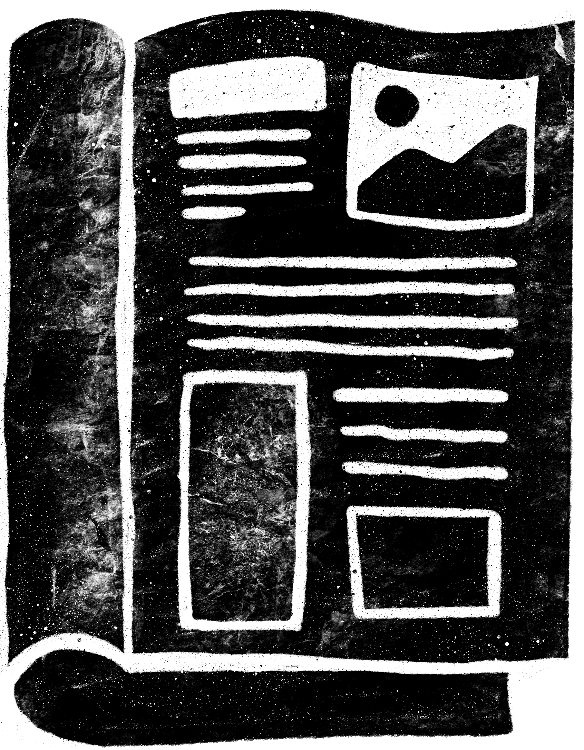Anthon Transcript

Title
Anthon Transcript
Secondary Title
Encyclopedia of Mormonism
Publication Type
Encyclopedia Entry
Year of Publication
1992
Authors
Bachman, Danel W. (Primary)
Editors
Ludlow, Daniel H. (Secondary)
Pagination
42-44
Volume
1
Publisher
Macmillan
Place Published
New York
Citation Key
535
Anthon Transcript
Author: Bachman, Danel W.
The Anthon Transcript was a sheet of paper, thought to be lost, upon which Joseph Smith copied sample "reformed Egyptian" characters from the plates of the Book of Mormon. In the winter of 1828, Martin Harris showed these characters to Dr. Charles Anthon of Columbia College (now Columbia University), and hence the name.
In February 1828, Martin Harris, a farmer from Palmyra, New York, visited the Prophet Joseph Smith, who was then residing in Harmony, Pennsylvania, where he had just begun to translate the Book of Mormon (see Book of Mormon Translation By Joseph Smith). Smith had earlier turned to Harris for financial backing for the translation; now Harris came to Harmony to take samples of the reformed Egyptian characters from the gold plates (cf. Morm. 9:32), thereafter to obtain scholarly opinion about their authenticity. Smith gave Harris a copy of some of the characters, along with a translation, which Harris then presented to at least three scholars in the eastern United States. The most important of these, given the nature of the inquiry, was Charles Anthon, an acclaimed classicist at Columbia College.
The two men's accounts of the meeting differ. Harris said that Professor Anthon gave him a certificate verifying the authenticity of the characters but that when Anthon learned that Joseph Smith claimed to have received the plates from an angel, he took the certificate back and destroyed it. Anthon, for his part, left written accounts in 1834 and 1841 in which he contradicted himself on whether he had given Harris a written opinion about the document. In both accounts, apparently to dissociate himself from appearing to promote the book, he maintained that he told Harris that he (Harris) was a victim of a fraud. Modern research suggests that, given the state of knowledge of Egyptian in 1828, Anthon's views would have been little more than opinion. Whatever the case may be about a written statement from Anthon, Harris returned to Harmony ready to assist Joseph Smith with the translation.
The reorganized church of Jesus Christ of latter-day saints possesses a handwritten text known as the Anthon Transcript that contains seven horizontal lines of characters apparently copied from the plates. David Whitmer, who once owned the document, said it was this text that Martin Harris showed to Charles Anthon. However, this claim remains uncertain because the transcript does not correspond with Anthon's assertion that the manuscript he saw was arranged in vertical columns. Even if the document is not the original, it almost certainly represents characters either copied from the plates in Joseph Smith's possession or copied from the document carried by Harris. Twice in late 1844, after the Prophet's martyrdom, portions of these symbols were published as characters that Joseph Smith had copied from the gold plates-once as a broadside and once in the December 21 issue of the Mormon newspaper The Prophet (see Magazines). In 1980 a document surfaced that seemed to match Anthon's description and appeared to be the original Anthon Transcript. But in 1987, Mark W. Hofmann admitted that he had forged it (see Forgeries of Historical Documents).
Harris's visit with scholars was more than just an interesting sidelight in the history of Mormonism. By his own report, Harris returned to Harmony convinced that the characters were genuine. Thereafter, he willingly invested his time and resources to see the Book of Mormon published. Moreover, the Prophet, Harris himself, and later generations of Latter-day Saints have viewed his visit as a fulfillment of Isaiah 29:11-12,which speaks of "a book that is sealed" being delivered to "one that is learned" who could not read it (PJS 1:9; cf. 2 Ne. 27:6-24; see also Book of Mormon, Biblical Prophecies About). His efforts apparently encouraged Joseph Smith in the initial stages of the translation. The Anthon Transcript is also important to subsequent generations as an authentic sample of characters that were inscribed on the gold plates and thus one of the few tangible evidences of their existence. [See also Book of Mormon Language.]
Bibliography
Kimball, Edward L. Review of Victims: The LDS Church and the Mark Hofmann Case, by Richard E. Turley, Jr. BYU Studies 32 (Fall 1992):171-177.
Kimball, Stanley B. "I Cannot Read a Sealed Book." IE 60 (Feb. 1957):80-82, 104, 106.
Kimball, Stanley B. "The Anthon Transcript: People, Primary Sources, and Problems." BYU Studies 10 (Spring 1970):325-52.
Larson, Jennifer. Review of Victims: The LDS Church and the Mark Hofmann Case, by Richard E. Turley, Jr. BYU Studies 32 (Fall 1992):171-177.
"Martin Harris' Visit to Charles Anthon: Collected Documents on Short-hand Egyptian." F.A.R.M.S. Preliminary Report. Provo, Utah, 1985.
DANEL W. BACHMAN
Subject Keywords
Bibliographic Citation
Terms of use
Items in the BMC Archive are made publicly available for non-commercial, private use. Inclusion within the BMC Archive does not imply endorsement. Items do not represent the official views of The Church of Jesus Christ of Latter-day Saints or of Book of Mormon Central.